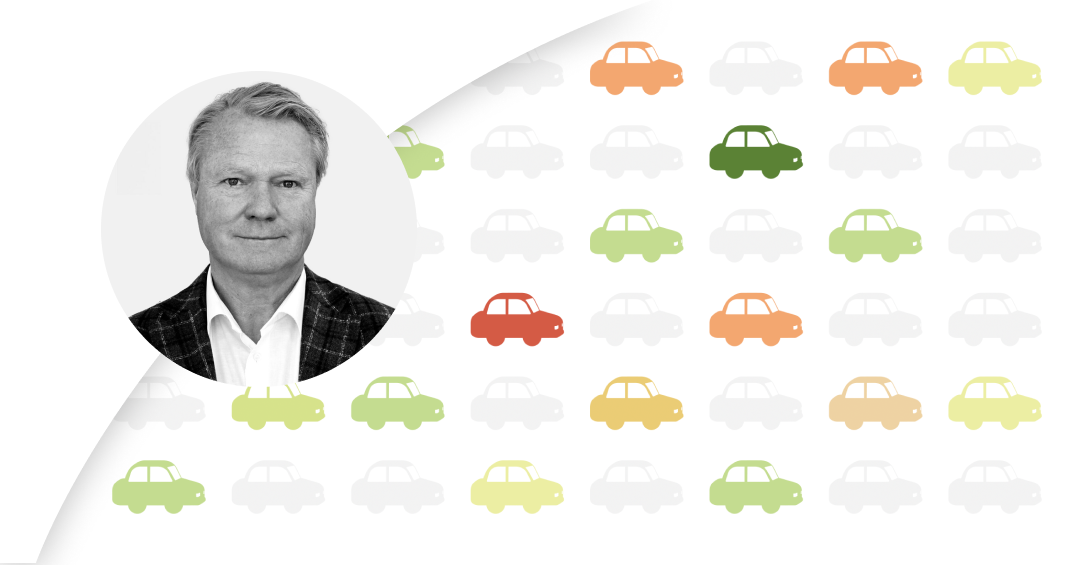New predictive capabilities of AI in motor insurance

Micro-pattern AI in motor insurance can predict crash type and cost
Insurance is an industry that relies on predictability. If an insurer can accurately predict what is likely to happen, it can offer fairer rates to customers. Now, pattern AI in motor insurance is facilitating the prediction of not only crash probability, but also crash type and associated cost.
Measuring driving risk
Motor insurers use various methods of measuring crash likelihood. These range from traditional “proxy based” ratings such as age, gender, occupation, and location, to data-based insights garnered through telematics.
Typically, telematics measures driver behavior in terms of events, such as harsh acceleration, braking, cornering, and speed. It uses such events – often combined with lagging indicators such as license violations and crash history – to rank driver risk.
I’ve personally been involved in research to determine the relationship between events and crashes – and found none of relevance. That’s why it’s necessary to measure driver risk differently.
Identifying patterns in driving behavior
Using machine learning, Greater Than broke down driver behavior into thousands of data sets. This allowed our artificial intelligence (AI) to see patterns that were previously invisible. We trained our AI with billions of real-world trips from over 100 countries, equating to over 855,000 man-years of driving. This enabled us to recognize patterns in driving behavior to create over 7 billion unique DriverDNAs, covering all trip types and identifying crash probability and related cost.
Pattern AI is already revolutionizing the way insurers, mobility providers and fleets approach driver risk. It enables fair pricing and supports insurance profitability. It also incentivizes safer, more sustainable driving.
AI is constantly evolving
With AI transforming the world before our eyes, it’s not surprising that companies are constantly playing catch-up. However, forward-thinking companies, who were quick to adopt AI, are the first to reap the benefits of new technology breakthroughs.
At Greater Than, we are relentlessly training our AI in our mission to prevent car crashes before they happen. Already, we can rate drivers on a 1-15 scale to identify those of average, below average and above average risk. Our sliding scale provides an at-a-glance view of how the risk level affects pricing. We’re now taking this to the next level by predicting crash type with pattern AI.
Delving deeper into pattern AI
Facial recognition compares a person’s facial signature to a database of known faces. Similarly, Greater Than’s pattern AI compares a person’s DriverDNA to a database of real-life trips. Micro-pattern profiling adds more pixels to the picture. As well as matching a driver to a “claims” or “no-claims” profile, we can also match claims type. We can identify similarities in data against real-world trips to predict what type of crash they’re likely to have.
Let’s compare this to event-based telematics, which roughly analyzes 5% of every hour, maybe 150 data sets. Our micro-pattern profiling measures 3.6 billion data sets per hour. When we think about the enormity of this number, it’s easy to imagine the extent of risk insight.
During the first phase we’re focusing on “driving forward” and “parking and reversing” collisions. However, as the pattern AI “learns”, it is easier to find micro-patterns within the micro-patterns. We’ll soon be able to see the patterns that indicate a high chance of a lane-changing crash for example.
Benefits of AI in motor insurance
The key benefits of micro-pattern AI in motor insurance are precision pricing, loss forecasting and planning. Some incidents are difficult for insurers to avoid, for example, windshield damage. Yet, if they can predict how many such incidents they’re likely to have, they can plan for the repairs and costs.
For the insured, including mobility and fleet, there are also numerous benefits. Knowing the type of crash a driver is likely to have helps with forward planning, specifically targeted driver training.
With micro-pattern profiling it’s also easier to identify drivers who might go under the radar in a typical program. That’s because a driver who, overall, has a safe driving score, could be high-risk for a specific collision type. The pattern AI data is so granular that we can see unsafe decisions practically as they happen. This means that if a driver experiences something in their life that suddenly affects their previously safe driving profile, the insured can take remedial action to bring down the risk.
Insights that would otherwise be undiscovered
Perhaps the most interesting aspect of micro-profiling in pattern AI is that it completely overturns traditional driver risk analysis methods. For example, in one data set analyzed using micro-pattern profiling, we discovered that the claims group drove slower than the no-claims group. Traditional telematics would identify the drivers using higher speeds as higher risk. While this could certainly indicate crash risk, it wouldn’t identify the drivers who don’t speed, yet who are at high-risk of a slow speed maneuver, such as a parking collision.
Micro-pattern analysis is transforming the way we look at risk, and enabling insurers, mobility providers and fleets to jump ahead of their competitors in risk management. When predictability matters to the success of a business, technology that makes more accurate predictions is the ultimate ambition.
With almost 20 years in data mining and pattern profiling, Greater Than understands driver risk. To learn more about the benefits of Greater Than’s AI in motor insurance, please reach out to us.

